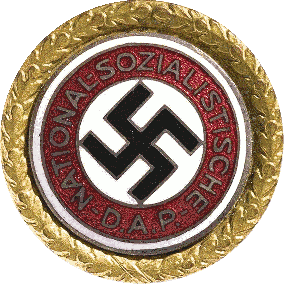One of the little known car manufacturers out of Detroit was KRIT or K-R-I-T motors. The main reason was that the company was only in existence for seven years—1909-1916. The company was never able to build up momentum because of the outbreak of World War I which interrupted the company’s export business to Europe and Australia upon which the company was dependent and drove it out of business. The name of KRIT is believed to come from the company’s chief financier, Kenneth Crittenden of Ford and Regal. The company was originally located at the old C. H. Blomstrom Manufacturing Co. works at the corner of Wright and Lieb until 1911 when the company was purchased by Walter S. Russel of Russel Wheel and Foundry who moved the operation to the old R. M. Owen & Co. works who had relocated after becoming Owen Magnetic.

A KRIT bus in Belgium. You might notice the swastika and wonder what it is doing there in World War I before the Nazis even existed. That would be because KRIT’s logo was, in fact, a swastika:


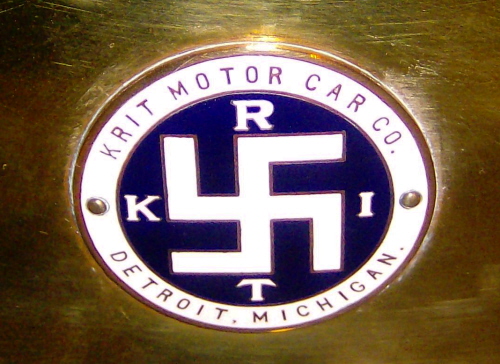
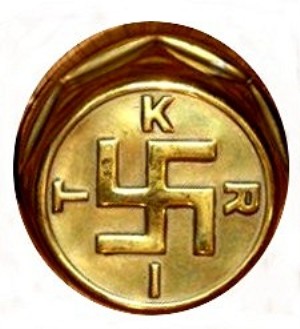
To be sure, the swastika was very popular in the US and Europe prior to the Nazis. The writings of Helena Blavatsky were very popular at that time and she was the one who first brought the swastika out of Asia and into the Western consciousness. She called the symbol of the fifth root-race of humanity otherwise known as Aryan. The swastika is found as far back as 9000 years ago in India and is the oldest symbol known to us today. It was originally a symbol of good fortune. The very word “swastika” or “suasti-ka” simply means “talisman.” The swastika appeared everywhere in America—from greeting cards to sports team jerseys. In fact, America had its own native swastika because it was an ancient symbol among many Indian tribes. The Chinese, Japanese, Koreans, Tibetans and others also used the symbol in Buddhism and it is still very common to see statues of Buddha with a swastika on his chest.

Clara Bow makes fashion statement. She supposedly had quite a bent for Eastern religion and philosophy.

It’s the real thing.
So at the time that Krit Motors was using the swastika, there was nothing particularly odd about it. What’s interesting is, did Hitler ever see or ride in a Krit vehicle and did he ever get a good look at the logo. The answer would appear to be yes.
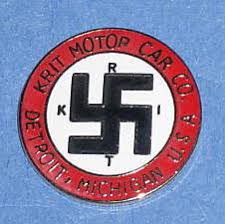
This Krit motif bears an uncomfortable resemblance to this one:

The standard story is that Hitler was sent into a mystical secret society called the Thule Gesellschaft as a spy for the Reichswehr. The society, which split off from the Germanenorden about 1916, was started by a man named Adam Alfred Rudolf Glaub although he habitually used a title of nobility—Baron Rudolf von Sebottendorff—even though he was neither a baron nor a Sebottendorff. The society was virulently anticommunist, anti-Jewish (which they viewed as being identical) and believed in Aryan (read as white) superiority. Other members included Dietrich Eckart, Rudolph Hess and Alfred Rosenberg (himself of Jewish background).
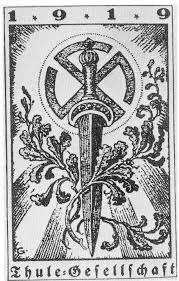
The Thule Gesellschaft emblem sporting a rounded swastika.
In 1919, Thulist named Anton Drexler started a worker’s party within the society called Deutsche Arbiterpartei or DAP. They met in beer halls instead of swanky hotels. Hitler became a DAP member and quickly rose in the ranks due to his extraordinary oratory gift. Hess became enthralled by Hitler and became his number one disciple. Eckart was delighted with Hitler and saw in him the future leader of Germany with the right grooming. Eckart and Rosenberg began giving Hitler his talking points and ideology. Eckart taught Hitler how to dress, what foods to eat and how to eat them in the company of wealthy and well-educated people, how to speak to them in cultured German. He trimmed off Hitler’s mustache to a small square and gave him a whip with the handle looped around his wrist. He was also delighted that Hitler was a bachelor which was important to win the female vote. Hitler was also no coward, when unleashing a tirade on the organization’s enemies, he stayed on the podium and continued to harangue his opponents even as the brass knuckles, truncheons and table legs began swinging. A roughneck with charisma, made to order.

A KRIT bus in Belgium. You might notice the swastika and wonder what it is doing there in World War I before the Nazis even existed. That would be because KRIT’s logo was, in fact, a swastika:




To be sure, the swastika was very popular in the US and Europe prior to the Nazis. The writings of Helena Blavatsky were very popular at that time and she was the one who first brought the swastika out of Asia and into the Western consciousness. She called the symbol of the fifth root-race of humanity otherwise known as Aryan. The swastika is found as far back as 9000 years ago in India and is the oldest symbol known to us today. It was originally a symbol of good fortune. The very word “swastika” or “suasti-ka” simply means “talisman.” The swastika appeared everywhere in America—from greeting cards to sports team jerseys. In fact, America had its own native swastika because it was an ancient symbol among many Indian tribes. The Chinese, Japanese, Koreans, Tibetans and others also used the symbol in Buddhism and it is still very common to see statues of Buddha with a swastika on his chest.

Clara Bow makes fashion statement. She supposedly had quite a bent for Eastern religion and philosophy.

It’s the real thing.
So at the time that Krit Motors was using the swastika, there was nothing particularly odd about it. What’s interesting is, did Hitler ever see or ride in a Krit vehicle and did he ever get a good look at the logo. The answer would appear to be yes.
This Krit motif bears an uncomfortable resemblance to this one:

The standard story is that Hitler was sent into a mystical secret society called the Thule Gesellschaft as a spy for the Reichswehr. The society, which split off from the Germanenorden about 1916, was started by a man named Adam Alfred Rudolf Glaub although he habitually used a title of nobility—Baron Rudolf von Sebottendorff—even though he was neither a baron nor a Sebottendorff. The society was virulently anticommunist, anti-Jewish (which they viewed as being identical) and believed in Aryan (read as white) superiority. Other members included Dietrich Eckart, Rudolph Hess and Alfred Rosenberg (himself of Jewish background).
The Thule Gesellschaft emblem sporting a rounded swastika.
In 1919, Thulist named Anton Drexler started a worker’s party within the society called Deutsche Arbiterpartei or DAP. They met in beer halls instead of swanky hotels. Hitler became a DAP member and quickly rose in the ranks due to his extraordinary oratory gift. Hess became enthralled by Hitler and became his number one disciple. Eckart was delighted with Hitler and saw in him the future leader of Germany with the right grooming. Eckart and Rosenberg began giving Hitler his talking points and ideology. Eckart taught Hitler how to dress, what foods to eat and how to eat them in the company of wealthy and well-educated people, how to speak to them in cultured German. He trimmed off Hitler’s mustache to a small square and gave him a whip with the handle looped around his wrist. He was also delighted that Hitler was a bachelor which was important to win the female vote. Hitler was also no coward, when unleashing a tirade on the organization’s enemies, he stayed on the podium and continued to harangue his opponents even as the brass knuckles, truncheons and table legs began swinging. A roughneck with charisma, made to order.
